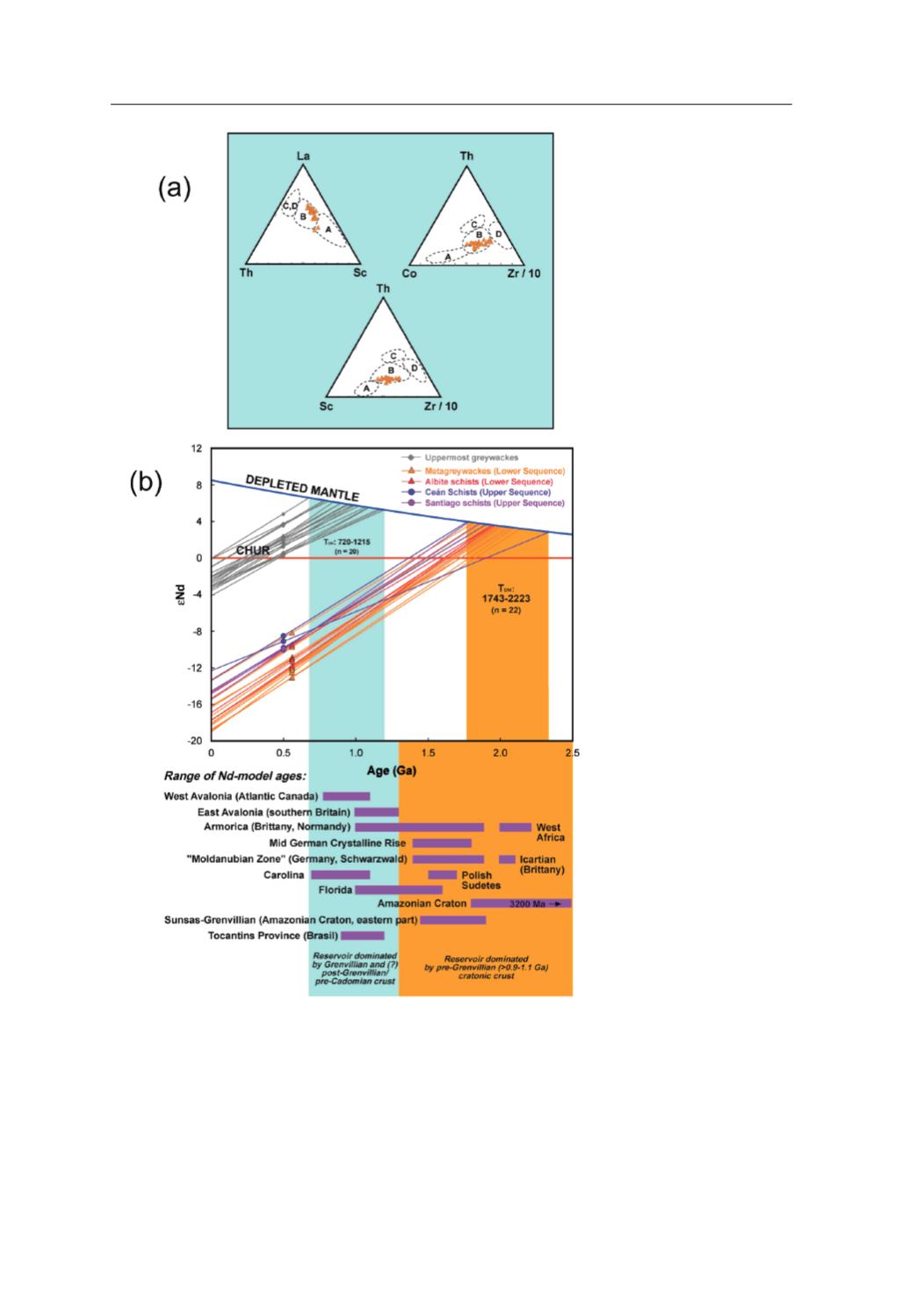
Upper Units
The Upper Units represent the thickest terrane
of the allochthonous complexes and also that
with the largest exposure. They are constituted
by a variety of units that can be grouped in two
main ensembles according to their tectonother-
mal evolution: an upper ensemble characterized
by intermediate pressure metamorphism (IP Up-
per Units), and a lower ensemble affected by high
pressure and high temperature metamorphism
(HP-HT Upper Units). The Upper Units are con-
sidered as a single and coherent terrane because
of their systematic position above the Ophiolitic
Units. In the first descriptions of the allochtho-
nous complexes these units were assigned to a
common tectonic setting and interpreted as sec-
38
3. GEOLOGICAL FRAMEWORK
Fig. 17.
Geochemical
data for the uppermost
metagreywackes of the
Intermediate-P
Upper
Units (Betanzos Unit). (
a
)
Trace element tectonic
setting diagrams (Bathia
and Crook, 1986). Tecto-
nic settings: A) oceanic
island arcs, B) continen-
tal island arcs, C) acti-
ve continental margins,
D) passive margins. (
b
)
TDM model ages (De-
Paolo, 1981) calculated
with
H
Nd values at 500
Ma, reference age for the
deposition of the meta-
greywackes. TDM model
ages of the metasedimen-
tary rocks of the Basal
Units are included for
comparison. Data source
for comparative model
ages from different re-
gions taken from Linne-
mann and Romer (2002).
Modified after Fuenlabra-
da
et al.
(2010, 2012).








